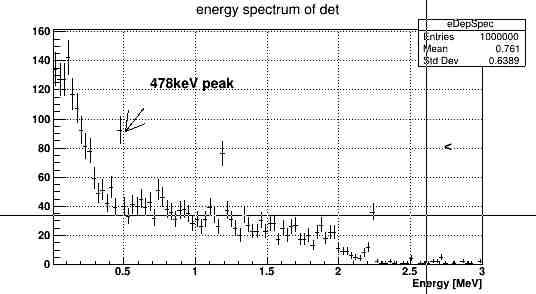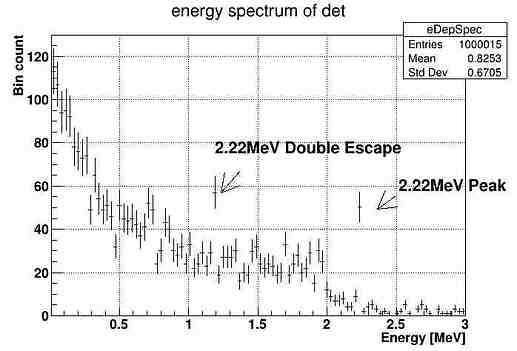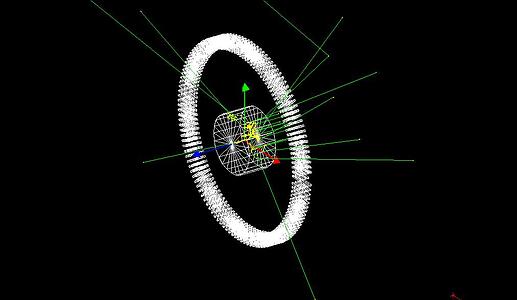Hello G4 experts:
I am simulating the gamma spectrum during epi-thermal neutron irradiating water phantom, we know that the gamma emitted by channel H(n,gamma)D is 2.22MeV, and with a possibility to undergo electron-positron pair production (recorded as ‘conv’ process in G4) and generate 511keV gamma.
However, in my simulation I find that the 511keV phantom does not show a significant peak in the spectrum. The peak of 2.22MeV is obvious, as well as the corresponding double escape peak, which means the pair production process happened, but the annihilation photons are rarely recorded.
My simulation is designed as a ring detector array circling the water phantom, and data in the spectrum above are collected from all detector elements and merged together (for any single element the count number is too low to make a spectrum). The energy is collected by step->GetTotalEnergyDeposit() and fill to the root histogram in EndOfEventAction(). The EM physics I use option4. The detector element material is NaI.
From the result above it seems like that there is no problem about the 511 keV disturbing target photon 478keV in B-10 neutron capture. However in many published articles it is mentioned that the target 478keV need to be distinguished from 511keV. There is another spectrum in which the water phantom is replaced by a B-10 contained water. The 478keV peak is significant here and we see no 511keV peak around. I guess there may be mistakes in my data collection, are there any suggestion for me to construct a correct detector simulation?, thanks in advance.

_Geant4 Version:_11.0.1
_Operating System:_windows subsystem for linux (WSL2), ubuntu 22.04 LTS
_Compiler/Version:_gcc version 11.4.0
_CMake Version:_3.22.1


